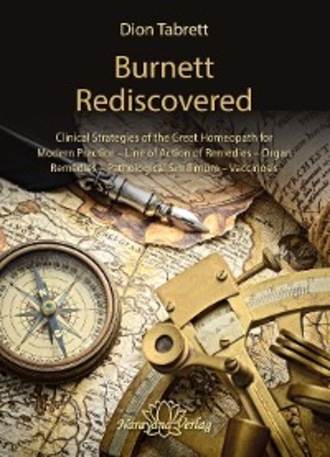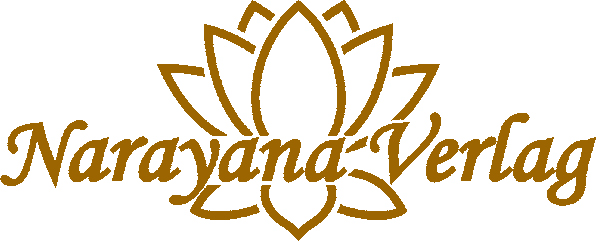
Полная версия
Burnett Rediscovered

Dion Tabrett
Burnett Rediscovered
Clinical Strategies of the Great
Homeopath for Modern Practice –
Line of Action of Remedies – Organ
Remedies – Pathological Similimum –
Vaccinosis

Imprint
Dion Tabrett
Burnett Rediscovered
Clinical Strategies of the Great Homeopath for Modern Practice – Line of Action of Remedies – Organ Remedies – Pathological Similimum – Vaccinosis
1st edition, 2017
ISBN: 978-3-95582-242-2
© 2017 Narayana Verlag GmbH
Editing: Narayana Verlag
Cover image: front: © Shutterstock – Scorpp;
back: © Shutterstock – Kamomeen
Publisher:
Narayana Verlag GmbH, Blumenplatz 2, 79400 Kandern
Tel.: +49 7626 974 970 0, E-Mail: info@narayana-verlag.de www.narayana-verlag.de
All rights reserved. Without the written permission of the publisher, no part of this book may be reproduced, duplicated, photocopied, translated or stored in any form by any mechanical, electronic or photographic process, with the exception of short passages for book reviews.
In so far as registered trademarks, trade names and common names are used, the usual protections apply (even if these are not marked as such).
The recommendations in this book have been compiled and checked to the best knowledge of the author and publisher. There is nevertheless no guarantee provided. Neither the author nor the publisher shall be held liable for possible detriment or damage resulting from the instructions in the book.
Contents
Introduction
1. Organopathy
Introduction
1.1 Definition of Organopathy
Organopathic Medicine
Case Study
1.2 Pathological Similimum
1.3 List of Organ Remedies
1.4 Materia Medica of Leading Organ Remedies
Liver Remedies
Spleen Remedies
Uterus Remedies
1.5 Synorganopathy
Varicose Veins
Heart Failure
1.6 Conclusion
Further Reading
2. Homoeopathy/Symptom Similarity
Introduction
2.1 Burnett’s Definition of the Law of Similars
2.2 Seat of Action
2.3 Kind of Action
2.4 Range of Action
Stop-Spot of the Action
Case Example
2.5 Pathological Similimum
Case Study
Case Study
2.6 Triads, Quads and Rotation of Remedies
2.7 Alternation of Remedies (Double Shots and the Scientific Alternation of Remedies)
Case Study
Case Study
2.8 Conclusion
Further Reading
3. Medical Doctrines
Introduction
3.1 Miasms and Nosodes
Inherited Miasm
Acquired Miasm
Infective Acquired Miasm
Non-infective Acquired Miasm
Exposed Miasm
Active Miasm
Dormant Miasm
3.2 Materia Medica of Nosode/Zoic Remedies
The Cancer Nosodes
Case Study
3.3 Vaccinosis
3.4 Aetio-pathology
Aetiological Causes
Two Aetiological Cases
Case of Anxiety Attacks and Swollen Spleen
3.5 Hybrid Cases and Constellations of Symptoms
A Hybrid Case
3.6 Conclusion
Final Conclusion
4. Appendix
4.1 Further Reading
4.2 A-Z Burnett’s Therapeutics:
4.3 Glossary
4.4 Remedy index
4.5 General index
List of Illustrations
About the Author
Introduction
Welcome to the world of James Compton Burnett. He was a very successful homoeopath and author of many books on homoeopathic medicine. Lots of cured cases of tumours, tuberculosis and vaccinosis. Lots of nosode prescriptions and organ remedies. And an ever-widening, expanding definition of the Law of Similars. What’s not to like about Burnett?
This book is for undergraduate students of homoeopathy as well as for postgraduates. For undergraduates it is best read after one year of study and after the basic principles of homoeopathic philosophy, materia medica, miasm theory and anatomy and physiology have been covered. An understanding of classical homoeopathic methodology is assumed. Postgraduates and practicing homoeopaths can refresh their studies of Burnett, or, if new to Burnett then this book may be used as a navigation tool through his works. Note: This book will be a companion text to students who study the Orion postgraduate course.
Burnett wrote for the prescriber more so than for the student, so have a comprehensive materia medica close to hand and a medical dictionary.
Chitkaras’ work, Best of Burnett, is strongly recommended but, as Chitkaras writes in his introduction, it does not replace Burnett’s original works. Best of Burnett can be considered “The Greatest Hits” compilation double LP. But, as every music aficionado knows, you have to listen to the original albums to get the true understanding. This book has no intention of replacing his original works but hopes to stimulate interest and reading (and indeed re-reading) of Burnett’s work.
Burnett loved philology: the science of language and the love of learning and literature. This is probably why he used interchangeable terms and invented new terms to serve his ideas. His knowledge of French, German, Greek and Latin also contributed to his approach. It can make studying his writings somewhat tricky. Therefore, to help navigate through the original books I have used many of Burnett’s terms (printed in Bold type) and included a glossary, defining each one. The glossary also contains general homoeopathic terminology for students.
Burnett has been my reliable “Clinical Compass” for the last 24 years. In an attempt to understand Burnett’s work in relation to case analysis I have found that he took a broad and deep approach, pulling in different disciplines as needed and creating new ones where none existed. He was a therapeutic trailblazer, who, despite his fantastic clinical work and results, was heavily criticised.
Burnett rarely looked to cover an entire case with one remedy. And the more complex or hybrid the case the more remedies he was likely to use. It is strongly evident throughout his work that he cast his inquiring mind broadly over each case, searching for organ remedies, symptomatic similar remedies and symptom patterns for nosodes, vaccinosis and aetiologies — similar to the astronomer who searches the night sky for familiar stars and constellations. At times we may recognise particular stars and patterns such as Ursa Major but at other times we are lost until we recognise a sequence and are guided to our goal. Therefore, I have introduced a new term, “Constellation of Symptoms”, which I hope will convey the meaning of looking for and recognising distinct and different symptom patterns that are indicative of distinct and different remedies in an individual’s case history. Just like stars in the night sky that form constellations so too symptoms and remedies make up case histories.
This book is divided into three main parts:
Organopathic Medicine
Symptom Similarity (Hahnemann’s Homoeopathy)
Medical Doctrines (Miasms/Nosodes, Vaccinosis, Aetiologies)
We start with the discipline of organ remedies and then progress to the increasingly more complex ideas of The Law of Similars and finally to the Medical Doctrines. At the end of the book there is an A to Z Therapeutic List based upon Burnett’s clinical work.
There are two people whom I must thank in the writing of this book. Both are fine homoeopaths (and both also fine chess players). Firstly, Lynn Forte who introduced me to homoeopathy quite a few years ago. A great prescriber with a profound knowledge of materia medica. Lynn is a reliable friend that I frequently talk to regarding ideas and thoughts about homeopathic medicine.
Secondly, Mike Bridger, to whom I remain in debt for the generous sharing of his ideas on remedy relationships, triads, case mapping and constellations of remedies. Mike is the only other homoeopath I know who prescribes and teaches in a truly Burnettian style with the addition of a strong understanding of Kent’s clinical cases and materia medica.
In 1994, I gave my first lecture to students at The London College of Homoeopathy at Regents Park College. That lecture was “James Compton Burnett” where I described his approach to practice. Now, 20 years have raced by and I still give a similar, but much updated version of that lecture.
It has been very enjoyable researching and preparing this book and each time I re-read one of Burnett’s books I learn something new. But I must make it very clear that to attempt to take all his books and distil them and concentrate the best parts into this book cannot be done. I cannot take a large quantity and pour it into a small vessel, be it beer glass or a book about Burnett.
Dion Tabrett
Конец ознакомительного фрагмента.
Текст предоставлен ООО «ЛитРес».
Прочитайте эту книгу целиком, купив полную легальную версию на ЛитРес.
Безопасно оплатить книгу можно банковской картой Visa, MasterCard, Maestro, со счета мобильного телефона, с платежного терминала, в салоне МТС или Связной, через PayPal, WebMoney, Яндекс.Деньги, QIWI Кошелек, бонусными картами или другим удобным Вам способом.



